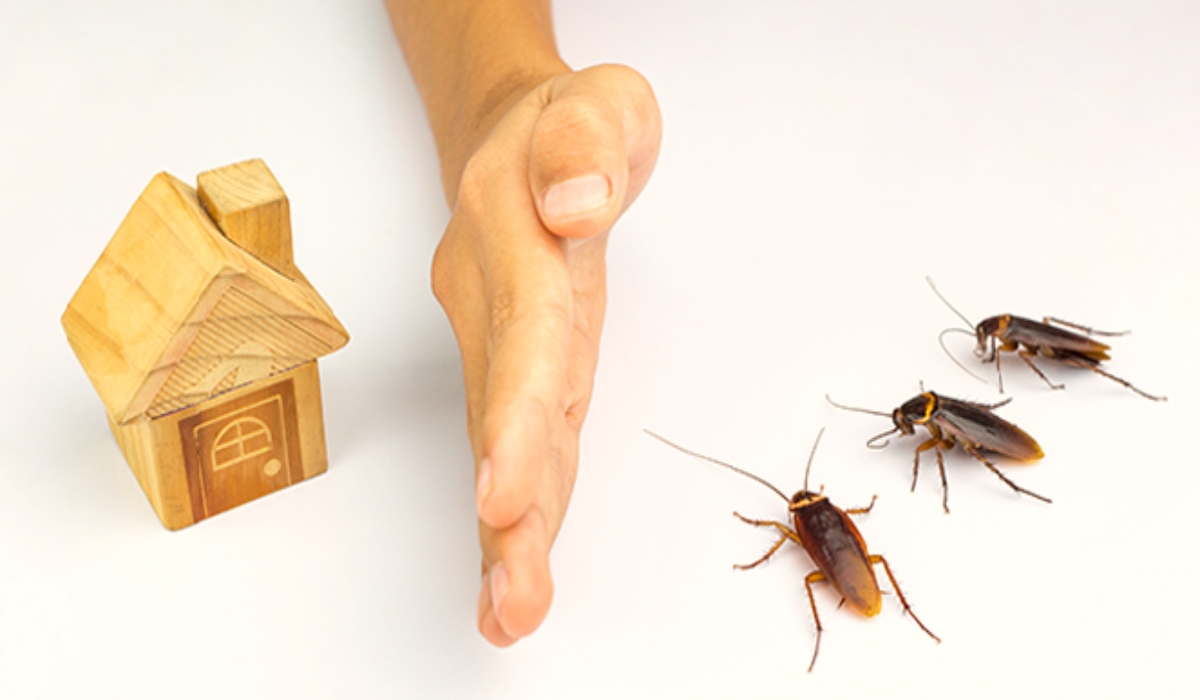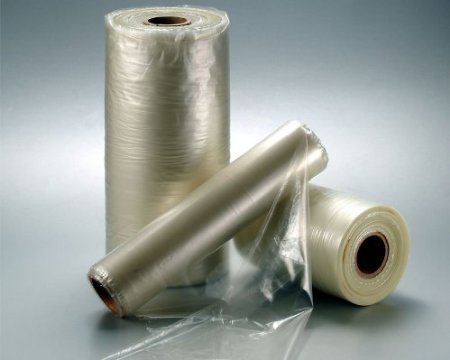Is the Household Insecticides Market Worth a USD 29.6 Billion Investment?

Strong 8k brings an ultra-HD IPTV experience to your living room and your pocket.
The global household insecticides market is experiencing significant growth, driven by a variety of factors such as rising health awareness and increasing prevalence of vector-borne diseases. According to Persistence Market Research, the household insecticides market is expected to be valued at USD 18.3 billion in 2025, and it is projected to reach USD 29.6 billion by 2032, growing at a CAGR of 7.1% during the forecast period.
This growth can be attributed to the continuous advancements in pest control technologies and innovations that meet the evolving needs of consumers. As new health threats emerge, particularly in tropical regions, demand for effective household insecticides continues to rise, driving both product innovation and market expansion.
Key Drivers of Market Growth
1. Rising Threat of Vector-Borne Diseases
Vector-borne diseases such as malaria, dengue, Zika, and chikungunya continue to pose significant health threats worldwide, especially in tropical and subtropical regions. According to the World Health Organization (WHO), these diseases account for over 700,000 deaths annually and more than 17% of all infectious illnesses globally.
With the prevalence of mosquito-borne diseases, households are increasingly turning to insecticides as part of their daily routine. Products such as mosquito repellents, sprays, and vaporizers are in high demand in areas affected by these diseases. For instance, in India, which reports over 40 million annual cases of vector-borne diseases, the market for household insecticides is expanding rapidly, driven by consumer concerns for health safety.
2. Health Awareness and Preventive Measures
Health-conscious consumers are now more proactive about disease prevention. Many households in high-risk regions are integrating pest control solutions into their daily lives, such as using mosquito mats, plug-in vaporizers, and herbal repellents. This heightened awareness is opening up opportunities for new products, especially natural and low-toxicity insecticides, that cater to the growing demand for safer alternatives.
As public health campaigns continue to raise awareness about the dangers of vector-borne diseases, the demand for innovative insect control products is expected to rise, fueling market growth.
Get a Sample Copy of Research Report (Use Corporate Mail id for Quick Response): https://www.persistencemarketresearch.com/samples/3923
3. Climate Change and Urbanization
The rise in urban mobility and changing weather patterns, including rising temperatures and seasonal travel, are also contributing to more frequent infestations of pests like mosquitoes, rodents, and bedbugs. In regions where vector-borne diseases are a serious concern, this has led to an increased demand for household insecticides.
For example, in regions like Southeast Asia, where diseases like malaria and dengue are rampant, the market for pest control products continues to grow as people look for ways to protect themselves from the increasing risks brought about by climate change.
4. Technological Innovations in Pest Control
Advancements in pest control technology are transforming the insecticide market. Products such as automatic mosquito spray devices and smart pest control solutions are gaining popularity. For instance, in India, Godrej Consumer Products Ltd (GCPL) introduced HIT Spray Matic, India’s first government-registered automatic mosquito spray device, to cater to the growing demand for smart, efficient insect control products. The launch of such innovations is expected to further boost the market for household insecticides.
Market Segmentation and Key Trends
1. Product Type Analysis
The liquid vaporizer segment holds a significant share of the market, accounting for 37.8% in 2025. Innovations like GCPL's Renofluthrin, a patented repellent molecule integrated into the company's vaporizer products, have played a crucial role in driving the popularity of liquid-based insecticides. These products are highly effective in providing fast-acting, long-lasting mosquito protection, especially in larger spaces.
Similarly, the aerosol and spray segment continues to thrive, with consumer demand driven by the effectiveness of products such as Mortein's Smart+ and Godrej’s HIT Thunderbolt, both of which offer enhanced protection against mosquitoes and other pests.
2. Mosquito Control Dominates
Mosquito control remains the largest application segment in the household insecticides market, accounting for 44.3% of the market share in 2025. This is largely due to the increasing prevalence of mosquito-borne diseases such as malaria and dengue.
In regions like South Asia, Southeast Asia, and Africa, where vector-borne diseases are prevalent, mosquito control products such as sprays, vaporizers, and coils are essential tools for households to combat the risks associated with these diseases. The launch of innovative products such as Mortein’s dual-action two-in-one spray and Godrej's HIT Thunderbolt spray is set to further cater to the growing demand for effective mosquito control solutions.
3. Resistance to Conventional Insecticides
While traditional insecticides have been effective in controlling pests, growing resistance to commonly used chemical formulations is becoming a significant concern. The development of resistance in mosquito species like Aedes aegypti and Culex pipiens threatens to reduce the long-term effectiveness of conventional products.
As a response to this challenge, companies are exploring innovative solutions, such as genetic engineering and biological control methods, to combat resistance. For instance, Oxitec’s Friendly™ mosquito technology, deployed in areas like the Marshall Islands, offers a biologically driven solution to reduce mosquito populations without the use of chemicals. This is an emerging trend in the market as manufacturers seek to develop eco-friendly and sustainable alternatives to chemical-heavy products.
4. Herbal and Eco-Friendly Products
With rising health and environmental concerns, there is an increasing demand for herbal and low-toxicity insecticides. Products made from natural ingredients, such as citronella, neem, and eucalyptus, are gaining popularity in households looking for safer alternatives to chemical-based insecticides. This shift towards eco-friendly products is driven by stricter regulations and growing consumer preferences for sustainable and non-toxic solutions.
Regional Insights
1. South Asia and Oceania
South Asia and Oceania account for a significant portion of the household insecticides market, with a 25.6% market share. Countries like India, where over 40 million people are affected by vector-borne diseases annually, drive demand for mosquito control products.
India, in particular, has witnessed a surge in smart pest control devices such as the HIT Spray Matic, an automatic mosquito spray device that offers a more efficient and automated solution for insect control. Similarly, in Oceania, countries like Australia are increasingly adopting new pest control technologies due to rising mosquito risks and the expansion of breeding zones caused by climate change.
2. East Asia
East Asia holds a 19.3% share in the market, with countries like China and South Korea playing a significant role in the regional market dynamics. In China, the increasing burden of dengue fever has led to the development of stronger surveillance systems and the launch of targeted control products.
In South Korea, where mosquito-borne diseases like Japanese encephalitis and malaria continue to pose a threat, annual surveillance and monitoring programs are being conducted to manage the risk. This regional awareness is contributing to the growing demand for mosquito control solutions, which is expected to further fuel market growth in the region.
Competitive Landscape
The household insecticides market is moderately consolidated, with key players continually innovating and adapting to regional demands. Companies like Godrej Consumer Products Ltd (GCPL), Reckitt Benckiser Group (Mortein), and S. C. Johnson and Son Inc. lead the market, investing heavily in product innovation and eco-friendly formulations.
GCPL, for example, has consistently introduced new products such as the re-engineered Kala HIT mosquito spray, which offers faster knockdown with reduced aerosol usage. These innovations cater to the increasing consumer demand for high-performance, user-friendly products that are also eco-conscious.
Additionally, companies like Oxitec and CSIRO are focusing on biological control methods, such as the Friendly™ mosquito technology, which is seen as a promising solution to combat the growing resistance to chemical insecticides.
Challenges in the Market
1. Regulatory Pressures
Stricter regulatory measures, such as the U.S. Environmental Protection Agency’s (EPA) Insecticide Strategy, are pushing manufacturers to innovate and produce low-toxicity, eco-friendly solutions. This is particularly important as public and environmental health regulations continue to evolve globally, with growing emphasis on sustainability in the formulation of household insecticides.
2. Evolving Consumer Expectations
Consumer expectations are shifting toward products that offer higher efficacy, safety, and convenience. With the increasing focus on environmental impact, consumers are now demanding products that not only protect their homes from pests but also minimize harm to pets, children, and the environment. Meeting these expectations requires continuous research, development, and innovation from manufacturers.
Conclusion
The household insecticides market is set for robust growth, driven by the rising prevalence of vector-borne diseases, increasing health awareness, and the demand for eco-friendly and smart pest control solutions. With innovations in product formulations and the development of biological pest control methods, the market is becoming more competitive and sustainable.
As households continue to prioritize health and safety, the demand for effective, safe, and long-lasting insecticides will only increase. This presents opportunities for companies that can adapt to shifting consumer preferences and meet the regulatory challenges in the evolving landscape. The next few years will likely witness significant advancements in the industry, shaping the future of pest control at home.
Explore more related market insights and reports by visiting our website.
• Liquefied CO2 Market
• Wool Market
Note: IndiBlogHub features both user-submitted and editorial content. We do not verify third-party contributions. Read our Disclaimer and Privacy Policyfor details.







